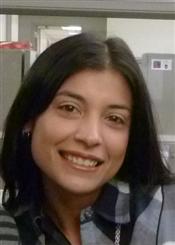Program Information
Is Patient Specific QA Needed for Field-In-Field Technique?
P Galavis*, J Kelley , O Volotskova , H Wang , N Sanfilippo , I Das , NYU Langone Medical Center, New York, NY
Presentations
SU-I-GPD-T-276 (Sunday, July 30, 2017) 3:00 PM - 6:00 PM Room: Exhibit Hall
Purpose: Patient specific QA (PSQA) is required for modulated beams like IMRT and VMAT. However electronic compensators and Field-in Field (FIF) are in a gray zone where a clear directive is not available. This study evaluates the QA of merged-FIF and provides institutional trends.
Methods: FIF was used in 45 patients with various disease sites (breast, whole-brain, and metastatic) and was planned to reduce hot spot to <10%. The physician approved plans were used for patient treatment on our TrueBeams. These plans were analyzed using MobiusFx, an add-on module of Mobius3D software that verifies the treatment plan delivery accuracy using the dynalog/trajectory files from the linac. The passing rate is based on the gamma index analysis with institutional criterion of 3%/3mm and the RMS error (calculated by comparing the delivery positions and the set values of MLC, jaws, and collimator/gantry angles, both read from the trajectory files). Monitor Units (MU) in merged and un-merged field were compared.
Results: A total of 226 FIF plans were analyzed. The distribution of FIF arrangements in breast, brain, and metastatic plans were 84.1%, 7.1 %, 8.8% respectively. The distribution of 1, 2, 3, 4, 5, > 5 beamlets were 20.3%, 18.8%, 4.7%, 28.1%, 9.4%, and 18.8% respectively. The average gamma passing rate was 95%±3%. The Y-jaws RMS error ranged from 0.65mm-1.0mm, whereas collimator/gantry angles presented 0.1 and 0 degree RMS error. The MU in merged and un-merged field differed <2 MU.
Conclusion: The gamma passing rates > 90% with 3%/3mm criterion were satisfied in all plans and the RMS values were within 1 mm for jaws and below 1 degree for collimator/gantry angles for each field. Based on PSQA, RMS and MU, it is concluded that there is no additional gain in performing PQSA and the acquisition of individual images for each field.
Contact Email:
